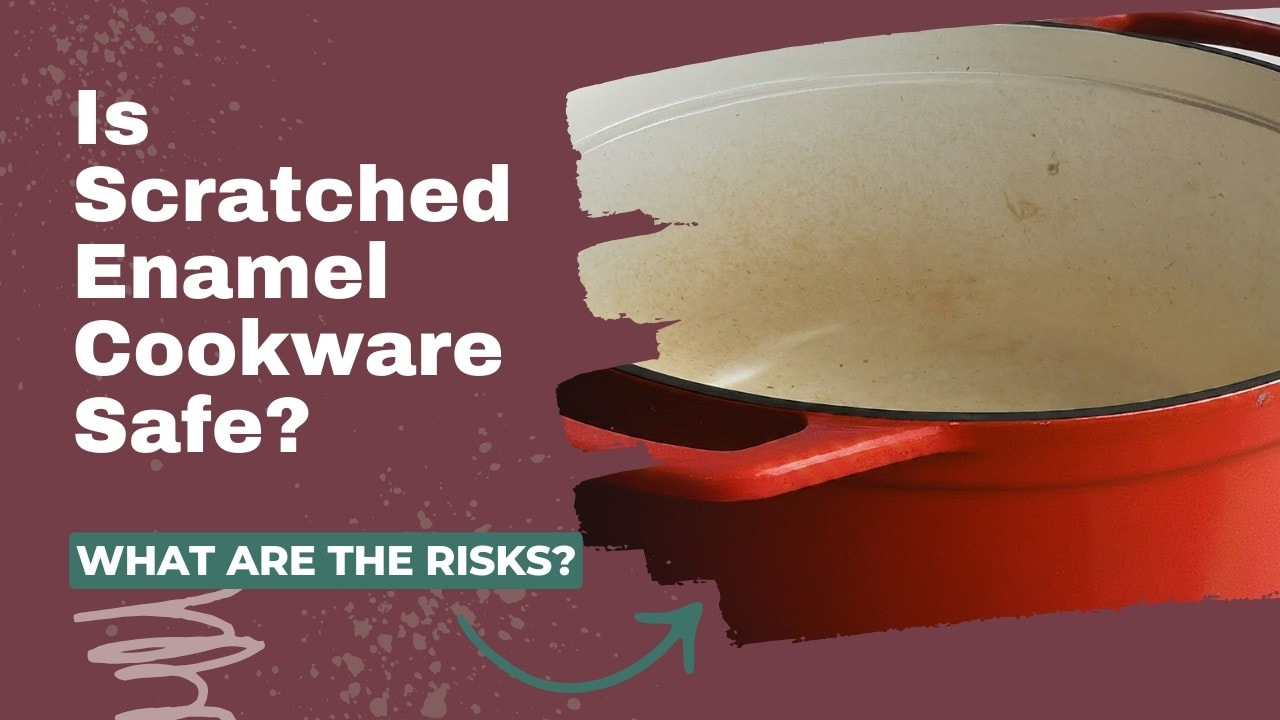DISCLAIMER: THIS PAGE DOES NOT PROVIDE MEDICAL ADVICE.
This page is intended for informational purposes only. No material on this page is intended to be a substitute for professional medical advice, diagnosis, or treatment. Always seek the advice of your physician or other qualified healthcare provider before changing your dietary or cooking habits.
Most enamel cookware on the market is made with a cast iron core and enamel coating. But you can also find aluminum cores, which are lighter in weight.
Enamel is a hard, glossy finish made from porcelain glass and containing minerals like quartz and kaolin clay. In manufacturing, the powder made from these minerals is fused to the core metal’s surface through electricity and heat.
But as hard as the enamel coating is, it can chip and come off with use and abuse. So, is it safe to use if your beloved enamel cookware is chipped or scratched?
Is It Safe To Use Scratched Enameled Cookware?
The usual advice is to err on the side of caution and replace heavily scratched or chipped enamel pots and pans.
When an enameled pan chips, the exposed metal can leach iron or aluminum into your meal and affect the taste and texture of your food. Plus, the chipped enamel bits can end up in your food and damage your teeth if you bite on them. The risks of ingesting enamel are unknown.
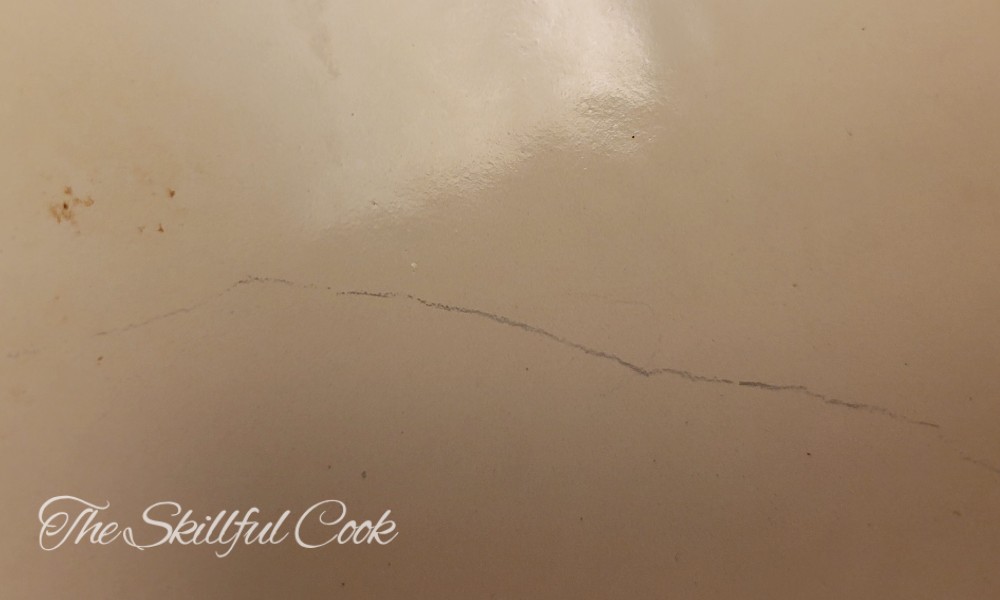
Is It Okay To Use Chipped Enameled Dinnerware?
It’s best to replace enamelware (including dinnerware) if it’s deeply chipped.
Lightly scratched enameled dinnerware is safe to use as long as you keep it clean. If the dinnerware is chipped and the underlying metal is exposed, more bits of the coating might separate from the surface and end up in your food. These chipped areas can harbor germs and bacteria – especially if the underlying metal rusts.
What are the Risks of Using Scratched or Chipped Enameled Cookware?
Based on my research, I believe that enameled cookware is one of the safest materials that you can have in your kitchen arsenal. It won’t react with acids, is made without polymers, and requires less oil than some other types of cookware.
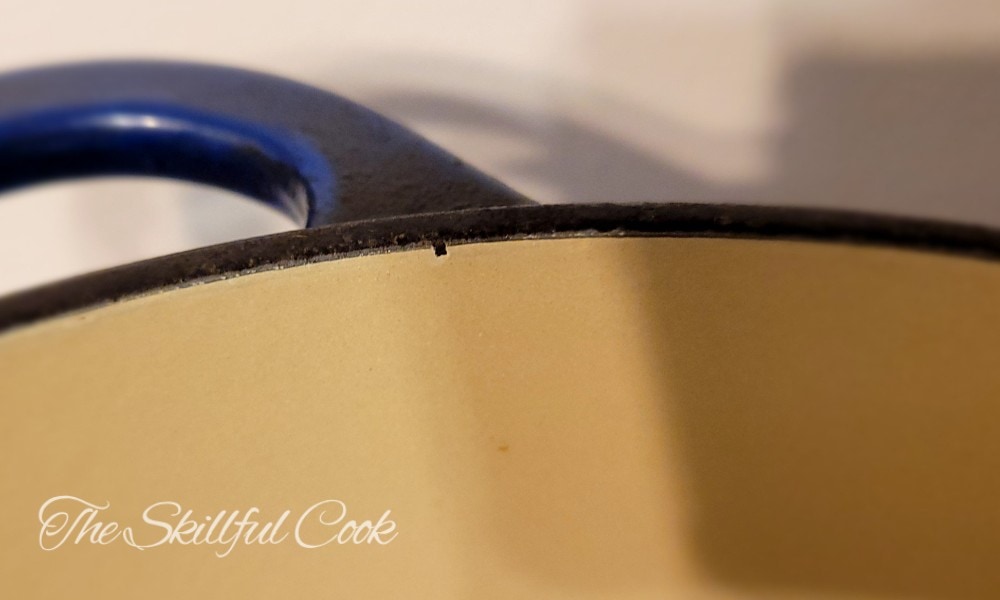
But if your Le Creuset or other enameled cookware chips or has deep scratches, you will want to consider these concerns:
Leaching Metal
Enamel coating creates a barrier between the metal body of a pan and your food. So, whether the pan’s body is aluminum or cast iron, you can be sure that it won’t react with your food – even if you cook acidic dishes like tomato sauce.
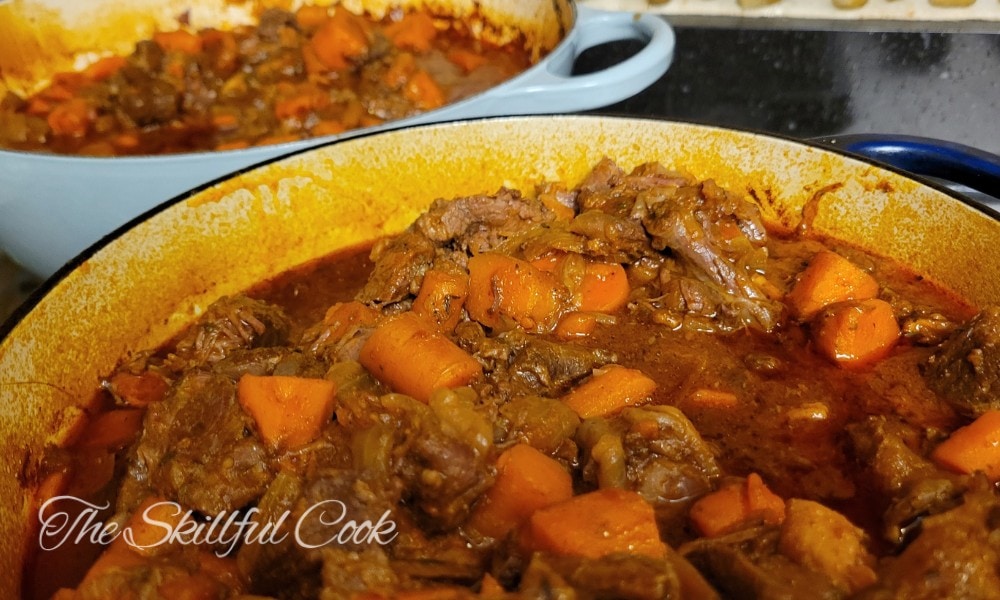
But a chipped enamel pot can’t offer the same solid barrier. Aluminum and cast iron are both considered generally safe metals for cooking by the CDC, and the exposed area in a chipped is probably too small to leach a lot of metal into your food. But you may want to be cautious, especially with acidic foods.
Corrosion and Rust
Corrosion is probably the biggest downside of chipped enamel cookware. The enamel coating protects your food against metal leaching and prevents the underlying metal from corroding and rusting. Both aluminum and cast iron rust very quickly if not protected by enamel or seasoning!
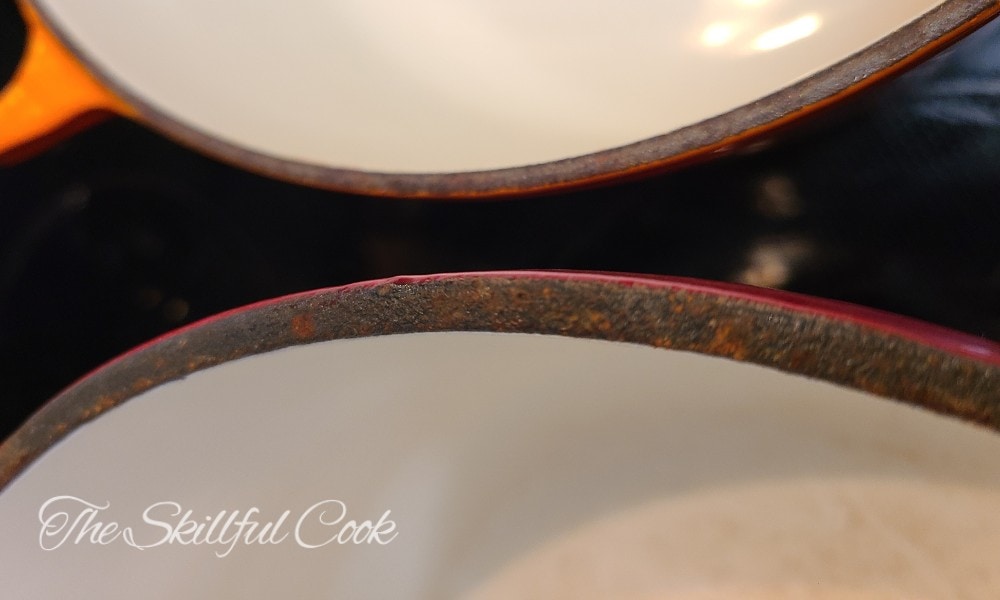
According to the FDA, rust from cookware shouldn’t enter the human body since it’s not a food-grade material. Plus, the exposed metal may not get cleaned thoroughly and become a growing hub for bacteria.
Enamel Pieces in Food
Enamel coatings are strong and don’t come off easily. But once they start to chip, they’ll keep going! And there’s a good chance that those bits will end up in your food — and eventually in your mouth!
If the chipped bits have sharp edges, they may injure your mouth or throat. And since they’re hard, they can damage teeth or dental work, too.
Regarding chipped enamel that may find its way into our stomach, there’s no evidence to show it can be dangerous or whether the body successfully passes it.
Heavy Metals (Lead or Cadmium) in Enameled Cast Iron
Modern enamel cookware from reputable companies like Le Creuset or Staub is made in accordance with regulations like California Proposition 65. These products should not contain harmful levels of toxic metals or chemicals, according to the FDA, or be labeled with a disclosure if they do.
Older enameled cookware, especially those with yellow or red colors, may contain heavy metals such as lead and/or cadmium. Lead and cadmium were traditionally used as pigments or pigment enhancers in ceramics.
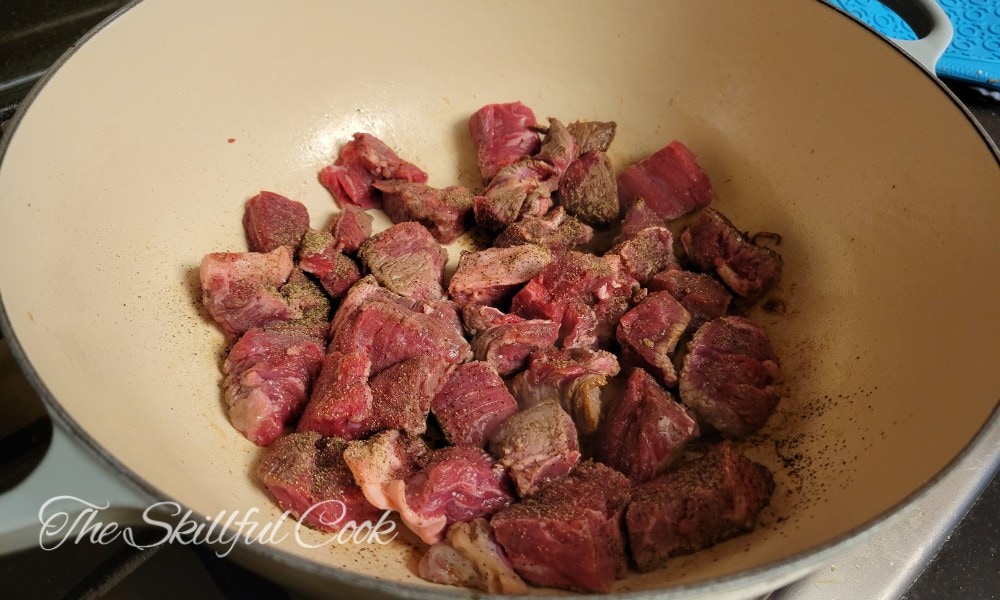
Most cookware companies have now abandoned or limited their use, or discovered ways to encapsulate these metals so that they do not leach into food. Every company has a different policy on this, and some are more transparent about it than others.
At The Skillful Cook, we have several articles that discuss the safety of modern enamel coatings, like those on Le Creuset or Staub Dutch ovens, in great detail.
These articles are reviewed by a medical doctor and pull together all the current research we can find on the topic, including reviewing tests done by consumers. These articles address concerns such as small amounts of lead found in some brands of enameled cast iron, and I encourage you to explore them as you consider this topic.
That being said, the US began to regulate the use of lead in pigments in the 1970s, and California Proposition 65 was passed in 1985.
If you use a vintage enamel pot or one made without the oversight of US/EU regulations, you should have it leach tested by a lab to make sure it doesn’t contain heavy metals.
What To Do With Scratched Enamel Cookware
So, your beloved Le Creuset enamel Dutch oven is scratched – what should you do with it?
If only there was a way to undo the damage!
Before doing anything about the problem, first, make sure it’s a real scratch or crack in the enamel. Sometimes, the fine lines on the cookware’s surface are just marks of metal utensils. You can get rid of them with simple cleaning using Bar Keeper’s Friend and a soft sponge. (Then try to avoid using utensils on your enameled cookware next time!)
But if the scratches or cracks in the enamel are deep, there’s nothing you can do to fix it. These scratches are permanent and get worse over time.
You may be able to salvage your thinning enamel with seasoning. But since enamel’s surface is glossy and smooth, you may never get the well-developed patina of, say, a seasoned bare cast iron. But it wouldn’t hurt to try if you’re done with your pot and want to throw it out.
I will say – don’t be tempted to get a recoat from third-party services. The coating materials may not be food-grade and nothing like the original manufacturer’s coats. Even if the coating is food-safe, it’s probably not as good and strong as the original and will eventually flake off.
In these cases, you should replace your enamel cookware. Reputable manufacturers like Staub and Le Creuset have lifetime warranties and replace your cookware if it’s not damaged due to dropping, misuse, and normal wear and tear.
Disadvantages of Enameled Cookware
Enameled cookware is praised for its versatility, safety, and durability. The hard enamel coating doesn’t scratch or chip easily, and it’s non-reactive. But it has some downsides. These include:
What Are the Alternatives to Enameled Cookware?
So, depending on what you want out of your cookware, you may want to look for alternatives. Here are the best ones:
Frequently Asked Questions
Does cast iron cookware contain lead?
Natural cast iron cookware doesn’t contain lead. It’s made of carbon and iron, sometimes alloyed with silicon, manganese, or other metals. But lead isn’t one of them! Lead has a melting point so much lower than cast iron that it’s not found in iron pan bodies.
However, the enamel on some cast iron cookware might test positive for traces of lead, which could be a concern if it chips into your food. Please search our site for other articles that explore this topic in more detail.
Can you repair enamel cookware?
I don’t recommend trying to repair damaged enamel cookware. Some people suggest using a food-safe epoxy to fill in gaps, but the epoxy may not be heat-safe.
If your Le Creuset piece is chipped or scratched, the damage is permanent and gets worse as the cookware expands and contracts with temperature changes. I recommend contacting the manufacturer to see if you can have it replaced under warranty.
Conclusion
To be on the safe side, you should replace badly scratched or chipped enameled cookware. Over time, these damages get worse, and more underlying metal is exposed. In addition to rust and corrosion, metal can leach into your food. Plus, the chipped-off bits of enamel can get into your food, and you may ingest them.
Do you have scratched enamel cookware? Did you try to replace or repair it? Please share your thoughts and experiences with us in the comments below.

